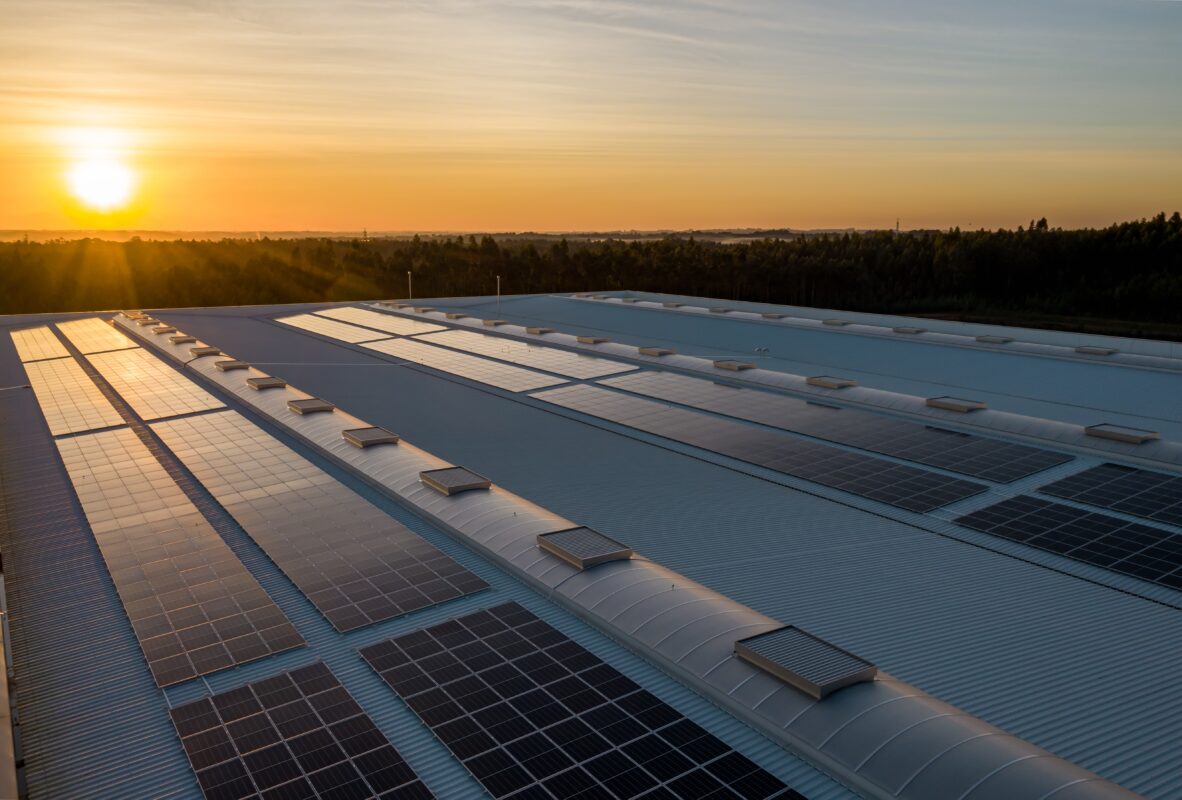04.11.2021

Green autumn
It may not be particularly insightful to say that the colour green can hardly be considered a symbol of autumn. This time of year is associated at best with the golden colour of falling leaves, and at worst with the greyness of November.
However, for the legislature, autumn usually marks a period of heightened activity. It is the time of intense parliamentary works, the pace of which is dictated by the desire to push through the most significant legal changes before the end of the calendar year. For the renewable energy sector, the most significant are the two changes that could make this autumn green. The changes mainly concern the long-awaited amendment to the Act on Investments in Wind Power Plants and the extension of the auction support system for renewable energy sources (RES).
Sunny side of RES
However, before we move on to the issues that are key for the future of green energy in Poland, it is first worth taking a look at the current situation in the industry, which is well illustrated by the results of this year’s auctions for the sale of RES electricity.
Information published by the Energy Regulatory Office (ERO) shows that this year’s auctions may result in the construction of photovoltaic (PV) installations of about 2.2 GW and onshore wind farms of only about 0.3 GW. In other words, this year’s auctions were dominated by photovoltaics, which clearly illustrates the current direction of the RES market development in Poland. According to the Polish Energy Policy 2040, adopted by the government in February 2021, photovoltaics in Poland are expected to reach the capacity of 7 GW by 2030 and 16 GW by 2040 (compared with less than 4 GW at the end of 2020). However, it seems that the number of PV installations built may significantly exceed the predictions of the Polish Energy Policy. The latest forecasts from the Institute of Renewable Energy indicate an increase in PV generation capacity to as much as 15 GW by the end of 2025.
Particularly interesting conclusions may be drawn from the results of the auction dedicated to the so-called large (i.e., with a capacity exceeding 1 MW) PV and wind installations. The results of this auction should translate into the construction of new wind installations of only about 300 MW. This is significantly less than the result of the initial auctions held for these installations (in the period of 2018-2019), which assumed an increase in onshore wind capacity of over 3.3 GW.
(Anti-)windmill revolution
Understanding the reasons for the current condition of onshore wind energy requires a brief trip back to 2016. That was the time when the Act on Investments in Wind Power Plants came into force. Due to the solutions adopted in the Act, it functions in the public debate as the “Distance Act” or the “Anti-Windmill Act”, which speaks about its impact on the shape of the energy market. It introduced restrictions that effectively limited the development of investments in onshore wind farms. This Act prohibited the construction of wind turbines at a distance of less than 10 times the height of the wind turbine from residential buildings (the 10H rule). In practice, this means a distance of about
1.5–2 km. According to an analysis of the Polish Wind Energy Association, about 99% of the country’s surface was thus excluded from this type of investment.
A temporary rescue for the wind industry came in the form of the transitional provisions to the Distance Act, under which construction permits for wind farms issued prior to its effective date (i.e., until 15 July 2016) or based on applications submitted by that date remained in effect. For this reason, a significant amount of auction awards have been granted to the onshore wind industry players via initial RES auctions (2018-2019). Nevertheless, the results of this year’s auction clearly show that only appropriate legislative changes can ensure further development of this technology in Poland.
On 4 May 2021, the long-awaited Draft Act amending the Act on Investments in Wind Power Plants and certain other acts was published. The draft provides for the retention of the 10H rule, while also providing a significant exception to it. In line with the industry’s demands, municipalities will be able to allow wind power plants to be located at shorter distances from homes on the basis of local zoning plans (MPZP), based on a forecast of the power plant’s environmental impact drawn up for the purposes of the draft zoning plan. However, this distance must not be less than 500m. The final wording of the draft may change as a result of public consultation and subsequent parliamentary works.
The findings of the Ambiens study cited in the explanatory memorandum to the draft are particularly interesting. As many as 75% of the projects not implemented due to statutory restrictions were to be located between 450m and 650m from residential development, with the remaining 25% located within 650m–1000m (or more). This means that municipalities may be given a tool that will realistically allow them to unlock new wind investments. In addition, the analysis quoted by the authors of the draft indicates a potential for onshore wind energy development of up to 23 GW by 2030 and 36 GW by 2040, while the current capacity of all wind farms in Poland oscillates around 7 GW (according to data from the Polish transmission system operator).
Undoubtedly, onshore wind energy can play an important role in building a green energy mix in Poland. However, before that happens, it itself needs a boost of energy in the form of a friendlier regulatory environment. Unfortunately, the draft has still not been submitted to Parliament, nor have any public consultation comments been published. As a result, it is difficult to predict whether the draft will ultimately be adopted, and if so, when and in what form. One can only hope that it will happen this autumn so that new wind investments will start appearing on the energy map of Poland from the beginning of next year.
Six-year plan for RES
The observable development of renewable energy in Poland may soon grind to a halt due to the expiry of the auction support system for RES. It is true that RES installations will be able to benefit from the auction-related benefits (including the right to cover a negative balance) for many years to come, but the possibility to enter the system will finish at the end of 2021. The Act on Renewable Energy Sources excludes the possibility of organising RES auctions after this deadline.
In this context, the fate of the amendment to the RES Act regarding the extension of the auction support system is crucial. At the beginning of October 2021, the President signed into law the Act of 11 August 2021 amending the Act on Renewable Energy Sources and certain other acts, which, among other things, provides for an extension of this period until the end of 2027, i.e., by as much as 6 years. The significance of the proposed amendments is best demonstrated by the fact that this 6-year period is longer than the current period for which the regulations governing the auction support system for RES have been in place (they came into force on 1 July 2016).
Although the new regulations enter into force on 30 October 2021, their effectiveness in the aforementioned scope depends on a positive decision of the European Commission on the compatibility of State aid with the internal market. Based on publicly available information, the amendment to the aid scheme has not yet been notified to the European Commission. Taking into account the experience with the European Commission’s consideration of amendments to the RES aid programme to date, it seems that the decision should be adopted within a period not exceeding two months from the date of notification. This means that we will, most likely, have to wait for the final decision until next year.
Autorzy

Jakub Dąbrowski
Managing associate, Energy and Infrastructure Practice, Linklaters Warsaw

Michał Maruszak
Associate, Energy and Infrastructure Practice, Linklaters Warsaw